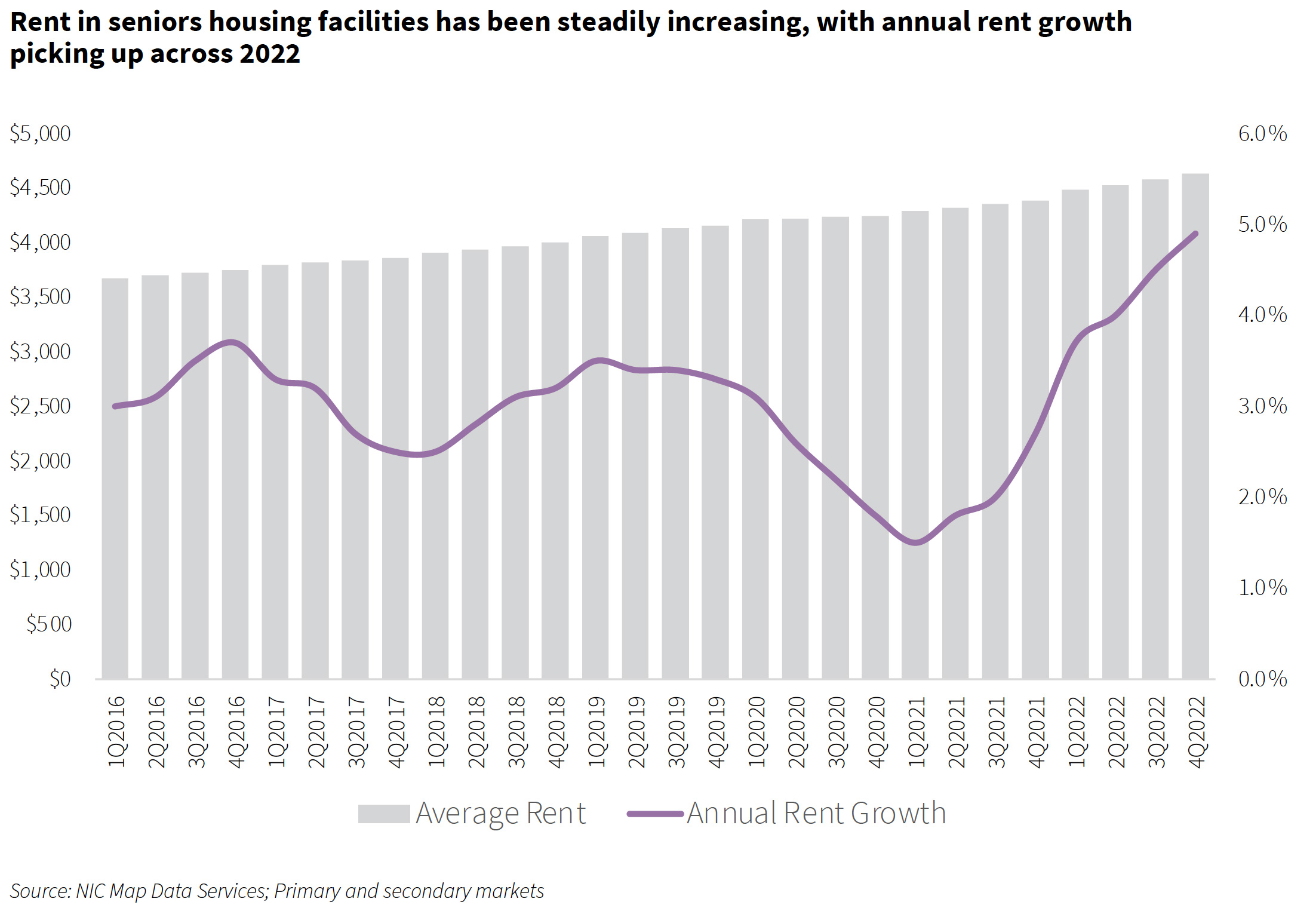CHICAGO — Despite pricing uncertainties limiting capital markets activity, interest in seniors housing remains strong as investors seek higher yields from alternative asset classes, according to JLL’s Valuation Advisory group’s sixth annual Seniors Housing Investor Survey and Outlook.
Of the investors surveyed by the Chicago-based valuation group, 44 percent indicated they would increase their exposure to seniors housing in 2023, and 44 percent said they would make no change to their current investments. Only 12 percent of investors surveyed responded that they would decrease their exposure in 2023.
Investors are more bullish on the assisted living and skilled nursing segments of the sector this year, with 31 percent of respondents indicating they would invest in assisted living, up from 28 percent in 2022; and 26 percent of investors interested in skilled nursing, up from 17 percent the prior year.
“While there are certainly challenges in the current capital markets, the underlying fundamentals of the seniors housing sector remain strong,” says Brian Chandler, co-lead for the JLL Valuation Advisory seniors housing practice. “We’ve seen rising occupancy rates, rising rents and a very muted construction pipeline, which will drive demand through 2023 and beyond.”
The survey also notes that, as institutional investors and core funds pull back in most sectors, private capital has taken an increasing market share with developers and owners seeking to enter the seniors housing space. Strong demographic tailwinds continue to drive demand and higher yields than other core asset classes drive investor demand.
“The 80-plus population in the U.S. is expected to grow by more than 50 percent in the coming decade compared to the overall population growing just 4.7 percent,” says Bryan Lockard, co-lead for the JLL Valuation Advisory seniors housing practice. “This underscores the enormous wave of pending demand for additional seniors housing and nursing care facilities, providing ample opportunity for developers, owners and investors in the sector long-term.”
To view the full report, click here.

